After traveling my own country for months, part of me thought I was done traveling with adolescents in large numbers. Yet the experience wouldn’t have been the same without all 20 of my amazing Boston Arts Academy students who recently joined me on a once-in-a-lifetime trip to Doha, Qatar.
There were: five dance majors (all girls), six theatre majors, eight musicians, and one visual artist. Each of them made contributions in their own unique way. The chaperones extraordinaire were: Greg Holt, Guy Michel (Mickey) Telemaque, Stephen Garshina Bobrow, Kim Conrad, and Usteda Rana Abdul Azziz, our Arabic teacher and fearless leader. She’d line up the students to check their attire before we went out most mornings and had no compunction about sending students back upstairs to change pants, shoes or a top. Also, having my oldest son Sam along was great fun. He’s a college graduate currently working with 7th graders, and had forgotten a bit about what high-schoolers were like. Sam is a great traveler and interested in all different countries and cultures. He also has an impeccable sense of direction (something I sorely lack). He’d figured out the city by the end of the first morning (along with many of our kids)! He and Kim also had a good time teasing me so I felt like I was right back at BAA.
These students participated in BAA’s first-ever Arabic language and culture program taught by Ms. Rana Abdul Azziz from Tufts, assisted during the first semester by Penelope Khiat, our wonderful on-loan French teacher from France. This has been a year of “firsts” at BAA with French and Arabic for the first time, to compliment Spanish and ASL in our World Language department. Students have benefited enormously from the experiences of stepping into other cultures and countries. I was very proud of our students’ emerging language skills as they introduced themselves again and again in Arabic and even tried to have conversations.
The Doha trip (and the Arabic program) is funded completely by the Qatar Foundation International (QFI), a new foundation in Washington, DC, funded by the Qatar Foundation in Doha. That foundation is building Qatar with the motto “our present is our future.” The foundation and much of the country’s initiatives are led by Sheikha Mozah, the Emir Sheikh Hamad bin Khalifa Al-Thani’s third wife, and considered by all to be a visionary leader fiercely committed to education. We saw evidence of that throughout our week’s travels.
Our adventures began, as they often do, on a Saturday afternoon before we ever left town. We gathered for departure in Logan Airport’s terminal C. Students said goodbye to parents and family members, some with tears and all with excitement and nervousness about what awaited us on the other side of the world. Two students had never been on an airplane. Many previously didn’t have passports. Most had never traveled extensively. Every single one had earned this trip, practicing their Arabic, learning about customs and cultural differences, particularly in relation to the ways in which males and females lead very separate public and school lives, and also about the importance of modest dressing. We’d all had two Saturday sessions with the QFI staff learning about Qatari ways. Students had also been in video or audio communication with the students they would soon meet. These students came from the two schools identified to pair with us. Much of the ground work to locate these schools came from the American Embassy in Doha. If the “present is our future” the school principals of these two institutions (Raba’a Independent Girls School and Yarmouk Independent Boys School) have the right idea. Both principals want their students to have opportunities that go beyond parents taking their children to Europe in the summer. The principals passionately want their students (and teachers) to experience and know about the vastness of American culture, and not just what is presented in the movies and media. We were very fortunate to be led to schools with such visionary leaders.
After a connection in Washington, DC, and a 12-hour flight, we landed in steaming Doha to a rain and lightning storm. Qataris greet lightning with great excitement (and some fear). Some say it signifies great things to come including the potential for wealth. The travel agent in Doha met us and loaded on a bus for our home away from home—the Movenpick Hotel. We found our rooms, showered and changed for dinner. It was only 6:30 pm Qatari time, but we had been traveling all night. While the dinner and greetings from the American Embassy and QFI officials were lovely, I’m not sure how much we took in.
The next morning breakfast was at 7:00 a.m. and we were off to our respective schools by 8:00 a.m.. Since my preparation included a long video conference with the head of the boys’ school, I went with the guys. Schools are called “independent schools” which means public, government funded, with standard curriculum, much of it from Britain and some from the International Baccalaureate program. Principals are granted some autonomy to develop their own missions/visions and foci. This is of course all within the confines of a country ruled by an Emir and an absolute monarchy. The facilities are all relatively new (like everything else in Doha) and the girls’ school was just constructed two years ago.
All schools have basically the same layout: An elaborate entrance and then a foyer that might have a reception area. Then a principal’s office. In the girls’ school the conference room is huge – four times our size with plush chairs and a huge conference table. Students gather in an enormous gymnasium-sized open assembly room for meetings and events. Classrooms spread across two floors, with a library and an even larger gymnasium. I had major “edifice envy” in this beautiful, clean, spacious school. The principal’s office was literally the size of our entire front office and Carmen and my offices!
In the boys’ school I visited an art classroom and an English classroom. The English classroom is appointed with a SMART Board (as are other classrooms, I think), and everything is light and airy. We were treated to a traditional Qatari welcome in the library with food and tea and greetings. We learned that food and tea and Qatari coffee are of utmost importance in all gatherings. Then we dispersed with our designated host students. These same students had video-conferenced with our students before we left. Even though they were 9th graders, our 11th and 12th grade boys bonded with them immediately. After visiting classrooms, a traditional Arabic sword dance and a falcon demonstration awaited us in the large assembly room. Falcon flying is a big part of male culture and activities.
After leaving the school, we visited Al Fanar Cultural Center, which is the Islamic education institution in Doha. Their guides gave a superb explanation of the pillars of Islam, including a brief history of the religion. Then they demonstrated the requirements for ablution before prayer and took us to the Mosque where they taught us how to pray. The muezzin gave the call to prayer and we prostrated ourselves and went through the choreographed movements. Our excellent teacher answered questions and made sure that we understood that Islam is not about the violent jihads we hear about on the news but a series of religious commitments that one makes in the service of Qur’an and the prophet Mohammed. While neither the boys (nor me) were required to wear head coverings or thobes, when the girls went on their visit, they were required to wear abayas. Women do not pray on the main floor but on the second floor behind a screen, much like Jewish Orthodox religious practices.
We returned for lunch and most of the boys and all the BAA male teachers went off to the American School in Doha to play music in preparation for jamming in the souq (the market) the following day. Sam and I took Ashard, Wilne, and Kenny on a walk down on The Corniche, the path that follows along the ocean.
Even in the blazing heat we felt good stretching our legs. I can’t say it’s pleasant to walk in Doha. Imagine walking in an over-heated construction zone with streets and sidewalks that end abruptly. While the present may be the future, apparently no one has thought about a future city for walkers. People jog and walk along the Corniche at all hours with a bit of greenery along it, yet the real attraction seems to be the ever expanding cityscape of buildings.
Everyone talks about how just 15 years ago there was only the Sheraton, a distinct pyramid-shaped building and two office towers. Now, towers bolt up absolutely everywhere with more going up on each block.
Will there really be enough business for all these buildings and about 300,000 Qataris? Add another almost one million ex-pats, the word used for immigrants – both of the professional class and worker class. All workers are from elsewhere: India, Sri Lanka, Sudan, other parts of Africa, Philippines and the rest of the Middle East. While Qataris have jobs, few of the men need to work and I wasn’t sure if women actually needed to work either. The teachers at the boys’ school were all from countries such as: Jordan, Iraq, Iran, and Ethiopia. No one, except the principal and perhaps his secretary, were Qataris. Being an educator is not as well paid as going into business. Since Qataris don’t really need to work, the incentive to be a teacher is low. (We heard that an edict may soon require a certain percentage of Qatari teachers, but clearly being a teacher is hard work. Teaching members of the royal family (and there are many) is even harder work. So, I wonder how that edict will play out if it indeed happens.)
The girls’ school was a different situation with many more Qatari teachers. Still the principal said that other better-paid and less stressful jobs are now more accessible for women. Inside the girls’ school, neither students nor teacher wear their abayas (loose black head-to-toe robes). They donned them only when coming and going like a cloak or a coat. Their strict Islamic rule forbids hair or your body outside of the abaya if you are with mixed company.
The boys and Sam and I found the souk (commercial market) when it was just opening (at 4 pm) and walked around a bit.
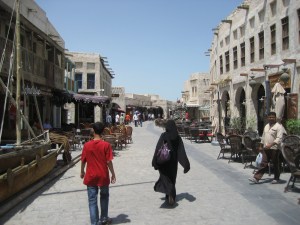 The souk is almost out of Disney – designed and built only recently, but looking like an “authentic souk” from another century that you find all over North Africa and the Middle East. Even though new and pre-fab, it still had its sections of hardware, cloth, food, trinkets, jewelry and antiques.
The souk is almost out of Disney – designed and built only recently, but looking like an “authentic souk” from another century that you find all over North Africa and the Middle East. Even though new and pre-fab, it still had its sections of hardware, cloth, food, trinkets, jewelry and antiques.
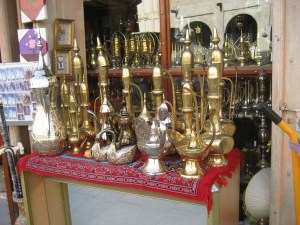 You are still expected to bargain—and vigorously. We all learned and saw that. Qataris go in large numbers at night to shop and to enjoy entertainment, often with outdoor movies or music, drink tea or coffee, smoke a hookah, eat or just relax with family and friends. A huge premium is put on just relaxing and enjoying the company of friends and family. The harried rushed pace of our Western life was hard to find in Doha.
You are still expected to bargain—and vigorously. We all learned and saw that. Qataris go in large numbers at night to shop and to enjoy entertainment, often with outdoor movies or music, drink tea or coffee, smoke a hookah, eat or just relax with family and friends. A huge premium is put on just relaxing and enjoying the company of friends and family. The harried rushed pace of our Western life was hard to find in Doha.
 We returned to the hotel to hear about the girls’ experiences at their respective sister school and also their visit to Aspire Academy for sports at Education City. Other than education, sports are the other top focus of the Emirate. These girls are being groomed to be the best for the kingdom. Qatar also hosts high-level tennis competitions, world biking competitions and is vying for the 2022 World Cup in soccer. They are already building all the facilities even though they have not yet been chosen. The Doha Debates, another fascinating institution in Qatar, is also in Education City along with Al Jeezera, the English version of the Arabic-language news network.
We returned to the hotel to hear about the girls’ experiences at their respective sister school and also their visit to Aspire Academy for sports at Education City. Other than education, sports are the other top focus of the Emirate. These girls are being groomed to be the best for the kingdom. Qatar also hosts high-level tennis competitions, world biking competitions and is vying for the 2022 World Cup in soccer. They are already building all the facilities even though they have not yet been chosen. The Doha Debates, another fascinating institution in Qatar, is also in Education City along with Al Jeezera, the English version of the Arabic-language news network.
Education City hosts six universities, each with its own focus, although students can cross register: Carnegie Mellon (business, computer science), Cornell’s Medical College, Texas A&M (engineering), Georgetown (diplomacy, political science), Virginia Commonwealth University (communication design, fashion or interior design) and Northwestern (communication).
There are 400 students admitted per year for a total of 1600 per university. Education City is mammoth and the buildings lavish and so this seemed like very small numbers. The Qatar Foundation paid for all of the construction of the facilities so there was no or little financial risk to any of the universities. The idea was to attract Qatari students to these campuses, but many do not have the grades or prerequisite skills so the seats are inevitably filled with students from all over the Middle East. It will be interesting to see how Education City takes off. Some of the impetus for building the campuses in Qatar came after 9/11 and the difficulty students from the Middle East had in getting visas to study in the US.
Late Monday afternoon we all went to the Marine Festival, a family-oriented event on the waterfront with games, exhibitions and small aquariums with fish displays. The Qatari boys met our boys there so we were separated by gender. We didn’t last long at the festival since two of our girls got pretty sick.
The next day all of us were back out with our friends at the respective schools, but Sam, Mickey, and I had the opportunity to visit Al Wabra wildlife preserve. Many sheiks, or Arab leaders, have a farm where they keep horses and maybe some other animals like gazelles or even cheetahs, but this farm is extraordinary. While Sheik Saud has been controversial for the way he acquired paintings for his home/museum, and criticized for the way he acquired some of his animals, his intentions are to breed nearly extinct animals to re-introduce them back into the world and so children will appreciate and care for animals. His professional staffs are highly trained in both research and animal husbandry. We had a tour of the birds (birds of paradise, and another species that had gone mad and was chewing everything, including their own feathers), cheetahs, ancient ass, oryx, and at least 15 other kind of animals. Ninety species live in wide open spaces and are cared for exquisitely. Massive greenhouses with cacti and other plant life and hydroponic methods grow much of the food consumed by the staff and the animals. I have been in game reserves in Zimbabwe but I never saw something like this or met animal keepers, tenders and researchers as passionate about their work. Al Wabra also boasts an enormous animal hospital. In spite of the accusations against this sheik, his work and the contributions are impressive.
From there I went to the girls’ school for the gift exchange, but by then I had caught the bug of the night before and literally passed out in the principal’s office. I was totally embarrassed but no one at the school seemed to mind that the principal from Boston was asleep in their principal’s office. Finally, in a car procured for me, I went back and slept for a few hours. Later I went to the souk where the boys were jamming at a gallery. More souk shopping and then dinner.
The next day I returned to Raba’a girls school to join an interview with a reporter and the other two principals. Our visit brought on a lot of newspaper coverage. That day both girls and boys had separated experiences in the souk with a Qatari artist. The girls then went to Villagio, a famous mall large enough for carnival rides, including one on a Gondola. I had the chance to go with Kim and Sam to part of the Al Jeezera documentary film festival. That night dinner was hosted at the homes of both a boy and a girl. All the girls came and a couple of other mothers. The house was lavish beyond description – three living rooms, Arabic-style, quite large and ornate furniture, a full-size gym, a pool (not too big), a beautiful Majlish which is the greeting room for guests, a library and play room, and two kitchens—one a huge preparatory kitchen off the main house to keep the smells away. There is no need for the mother to ever leave the house. She can exercise, watch television, work with her service staff, care for her family, enjoy her garden and never leave the compound.
The Qatari girls began the evening with Arabic hip-hop dancing, which is very similar to ours except the bumping and grinding is done just with girls. Moona, our hostess’ daughter, loved being the leader of the bottom shaking. After dinner, one of the other young girls danced for us – more traditional Egyptian as she was from Egypt. Our girls called it belly dancing although I wasn’t sure of the name. Just beautiful with the arm/hand motions and the swaying back. This 15-year-old left us all transfixed and transported.
Thursday was a full day – Earth Day at Education City with four other schools from Doha including our sister and brother schools.
 The American Ambassador LeBaron was present as well as a number of dignitaries and CEOs of companies that are working for a clean and green environment in Qatar. One of the leaders of the event was an American woman from an Earth Day organization in the US. QFI officials had done all the ground work to make the day a success.
The American Ambassador LeBaron was present as well as a number of dignitaries and CEOs of companies that are working for a clean and green environment in Qatar. One of the leaders of the event was an American woman from an Earth Day organization in the US. QFI officials had done all the ground work to make the day a success.
We broke up into rooms for workshops on renewable energy and other environmental issues where we could interact with students from Doha. We came back together for a presentation to the whole group. We then went to do a beach clean up with some of the other kids from Qatari schools. Our Qatari boys participated but most of the girls just walked down the beach and sat in their black abayas. I was proud of the BAA kids who all donned thin surgical gloves and jumped into the fill up bags with trash.
From there we said goodbye to our Qatari friends and were picked up by seven SUVs—a Hummer and Land Rovers, and driven to our desert campgrounds, but not before stopping to ride camels.
We were driven over the dunes in a roller coaster fashion.- called dune bashing. I was happy to be in a “grown up” car and not with screaming adolescents. They loved it all!
We arrived at our camp at about 6 pm with a bit of daylight that allowed for a dip in the Persian Gulf. Swimming in that warm salty water as twilight came upon us was amazing.
Next was a wonderful Indian style dinner where we sat on cushions and ate around round tables on blankets on the sand while lamp light flickered. We were the only people in this Bedouin style camp which had about 15 tents filled with pillows, rugs and floor level couches for sleeping. While we said boys would sleep on one side, girls on the other, about six kids slept out all night. They slept right by the door that led to the port-a-potties so that all night they were interrupted by us trooping around to toilets. Although I slept only a few hours that night (hard cushions and the nervousness about who might be sleeping with/next to whom), basically everyone really behaved.
Perhaps our best moment came as we circled up outside the tent area on the dunes, near the water. Rana asked the kids about what surprised them about the past couple of days. The reflections included a student talking about his inability to make friends with his Qatari counterparts because of fear of sharing his real self. This student is gay and knows about the homophobia in the culture. Others talked about how similar they were to their new friends. Many spoke about how to make sense of what they perceived as a society on the move alongside their perceptions of women in black abayas who clearly don’t have the same freedoms as men. At the same time, the women are aggressively pursuing and achieving in the education realm. It was good to hear the kids being reflective about their experiences.
Our final day included some resting and a hospital visit for one student. Kimberly, the student, was worried she wouldn’t be able to fly and so we had her checked out. In a very efficient emergency room, the whole experience only took us about two hours. Now with medicine, she was ready to join the group. We went to the Islamic Art Museum.
The building is designed by I.M. Pei and gorgeous, peaceful and filled with water and light. The art work is from the entire historic Muslim world and the galleries are arranged both historically and by art type. I’ve never been to a museum where exhibits consistent of just one bowl or just a few titles or one rug. It was breathtaking. The visiting exhibit was on the history of pearling—particularly in Qatar. I found that fascinating.
Our penultimate destination for our last day was to a cousin of the Emir’s. Sheika Amna hosted us in her home where we learned about Qatari traditional customs and participated in a mock Qatari wedding (which I thought was real). We entered the lavish grounds and were escorted into rooms where we put on our abayas but not gutras (the headdresses) and the boys all put on thobes and gutras.
Now transformed into Qataris we sat on the cushions and the singing and dancing began. We all danced and the dance teacher was terrific. Judelle, Kimberly, and Laura Martinez in particular really got into the dancing and caught the attention of the Sheika.
I loved the sea shanty or sailor songs. We had heard one at the Yarmouk boys’ schools, but not with melodies sung by so many professionals and with the physical movements of pulling the ropes to signify pulling the boats down into the water. I think sea shanty songs all over the world probably share many elements. These songs speak to missing one’s family since you are out at sea for six months. Ashard sang “Wade in the Water” for the Sheika and her family. The surprise was the band drumming for him and three of the singers learning the chorus. The girls also had a chance to get henna on their hands (and of course, faces, feet, and legs.) They were in heaven.
Then the “actual” wedding began and we were part of it, dancing and yelling along with the band. Finally we had dinner with grilled shrimp, lobster, chicken, shawarma sandwiches, an entire lamb, and more delicious desserts than ever! The Sheika and her husband were with us and seemed genuinely interested in our students and our purpose in being in Qatar. We finally were ready to leave (and meet our Qatari friends in the souk for the last night), but not before everyone was given gifts by the Sheika.
The best thing for the kids, I’m sure, was making new friends and learning about a culture through the actual people who live there. Almost all the students we met in our respective schools had a strong command of English which made communication quite easy. Our students’ Arabic skills are all at the beginning level. While I suspect that the students we met are enormously wealthy, they also were generous and interested in being with our kids. They don’t seem to have much of a critical consciousness about having many maids and servants, nor do they seem particularly aware of how their lavish lifestyle may be perceived by others. That didn’t stop them from sharing many of the same interests and secrets as our girls. I think our boys found their counterparts equally open, but I’m not sure they would describe them as humble or unassuming. Just the simple idea of dropping trash knowing that someone else will pick it up and clean up for you seems to create a tension for some. As Leah said at one point, she didn’t want to put people in a box, but she did think that many of the people she met were in a box. She wondered aloud if the box felt transparent and porous to the Qatari girls or constraining. “Maybe it’s just my difficulty with knowing that I couldn’t live like them?” she asked herself.
For me, I’ve always been suspicious of rigidity in religion in any form. The way the Qataris, for the most part, embrace and allow their religion to completely dominate life makes me wary. Little separation exists between mosque and state. It feels one and the same. The call to prayer happens five times a day and everyone prays, or at least they are supposed to. The clothing worn by men and women (although considered cultural and a positive part of bringing back tradition) seems to be sensible for men (white thobes and headdresses keep the heat at bay). I’m not sure how a black abaya which covers up your head and often your entire face except the eyes is freeing for women or comfortable in this climate. The argument is that it is freeing and only worn outside when in male company. Still, I found the insistence on not having one’s pictures taken and not being in male company without being covered is a way to lessen the power and authority of women. I’m still processing this, of course, and trying to stay open. I know that some feminist theorists would say there is no difference between the objectification of women in our culture and that in Qatari’s culture—in both places women are used. Yet I sense a hard and harsh glass ceiling for women. Still, the streets are safe. And yet, even though Sheika Amosa purports to passionately care about education for women, I watched our hostess Sheika Amna be shut down by her husband. He isn’t even royalty, just another rich man from another wealthy family. When he spoke, or interrupted her, she just listened, although she didn’t seem happy.
Both the principal’s daughter and another mother at our dinner host’s house had 18-year-old daughters who were getting married. They were both accepted to universities (it is free) but neither mother thought that they would continue to go. They would begin their families (and families are large there) and that would be that.
While in Doha, we heard lots of references to Arabic time which basically means that things always start late. Something else about this Gulf country of Qatar puzzles me. Is it the intense heat? The laid back sense of being by the water? The enormous wealth? An “ex-pat” class and an under class that actually does the work? What does it mean to be Qatari and not need to work to live? All of this may conspire to create a country that lives between two poles: One wanting to be a place where debate and disagreement is practiced and even celebrated, and western ideas are embraced, and where education is pre-eminent. The other pole is a place deeply rooted in traditional culture and practices that value women only with family and where Islamic ideals are valued before all else, and where men have the ability and time to play and fly falcons and acquire exotic animals, and ride horses and hunt and go desert camping. Leisure activities are valued. And time with family is deeply valued. Each gender has his/her own rituals with time to enjoy the company of their own sex in a relaxed and comfortable setting. This camaraderie within females and males was compelling.
Also compelling was each principal’s determination to provide more experiences for their students. “Shopping and the easy life” cannot be everything, both principals told me. They want to find ways for their students to be engaged in learning for learning sake. But as Mr. Ibrahim, the boys’ principal queried: How does a young man who has everything by age 15 – a car of his choosing, the electronics of his choosing, and no requirements to work, find developing the mind a choice and path for freedom? And, what is freedom, after all? Is it the same for all of us? Ms. Nora, the woman principal, wondered whether her students would, in fact, have the skills to enter the universities at Education City and thus broaden their possibilities. But would they take advantage of these opportunities. “My own daughter has seen me work so hard. She doesn’t want that for her life.” Most likely the Qataris will continue to face these questions. As will our students, too. One difference: Many of our students know how to work hard for something that they love – their art. In that sense, although we are all of a poverty class compared to our Qatari friends, perhaps we have a gift to give those in Doha about the pleasure of developing expertise passionately. We all discussed the gift the Qataris gave us: the gift of time. Both girls and boys alike gave of their time completely generously. They wanted to be where our students were, no matter what. We couldn’t imagine how we, in our highly pressured lives, would have that gift to give. I return to Boston glad for the experience to travel to Qatar and willing to continue to ponder how and whether the free expression we know in the US needs to be valued beyond all else. Do the same-gender experiences and the bonds that those groupings can create indicate something missing in our lives? Can we learn in this country about how to better treat immigrants by the Qataris experience? Questions and more questions.
I appreciated the opportunity to learn and look through the lenses of my students and colleagues as we processed our experiences. My dream life has been robust since returning: I find myself in a Bedouin camp and I can’t seem to find my student girls. Every time I stretch an arm out to reach one, another pillow or carpet seems to stifle my grasp. I wake up. Then I dream again the same dream the next night. Or I dream about women in black abayas walking down the beach in large numbers. What does that dream mean? Last night I actually found myself standing in my hallway outside my room saying, “Where are my girls?” I have recounted this dream to one of my male students, Gio, who says, without missing a beat, “It’s different there for women and you are thinking a lot about that, Ms. Nathan.” As often happens, the kids are right. Again, I’m grateful for the opportunity to learn and live with my wonderful students and teachers.

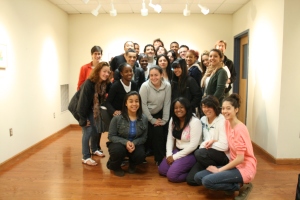

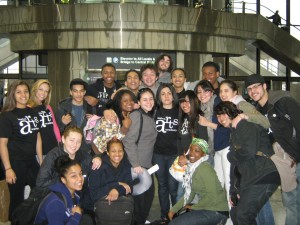







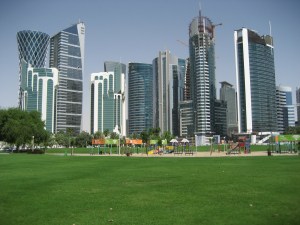
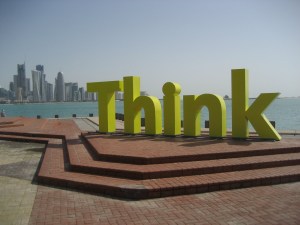



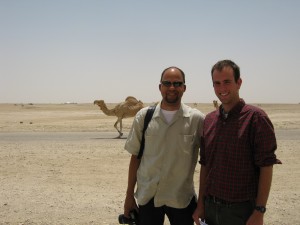

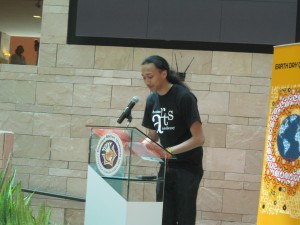

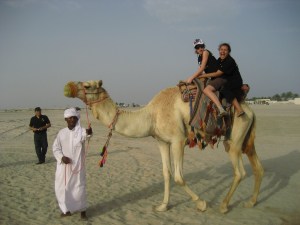





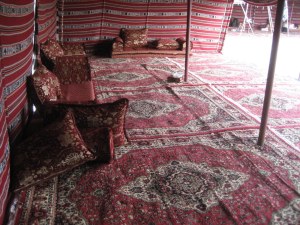
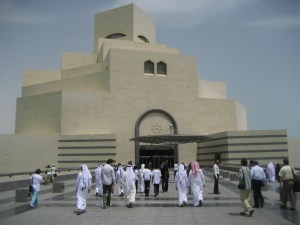
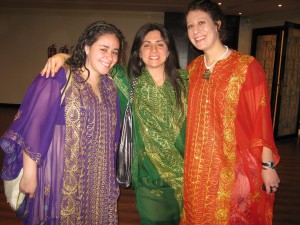


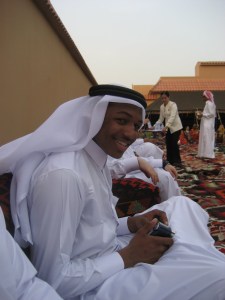
I like all things that above you mentioned.
you are done a great job.
I am an Indian and now @ Qatar
with regards
Nubeesar
Graphic/3d Designer
55932135